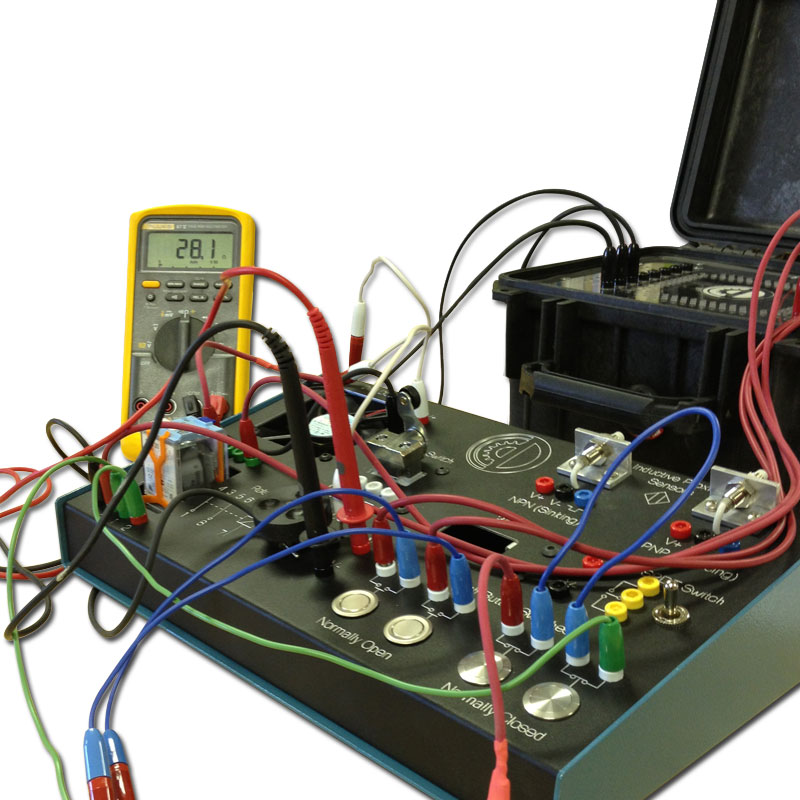Leading Tips for Effective Electric System Troubleshooting
Troubleshooting electrical systems needs a systematic technique, based in a comprehensive understanding of electrical principles and safety and security protocols. The subtleties of reliable repairing extend past simple technological knowledge; recognizing just how to record searchings for and prioritize safety can substantially affect end results.
Understand the Fundamentals
Comprehending the basics of electric systems is important for reliable troubleshooting, as a solid structure enables professionals to identify and fix concerns much more successfully. A comprehensive understanding of electric principles, such as voltage, present, resistance, and power, is essential in determining the origin of issues. Voltage is the electric possible difference that drives present with a circuit, while resistance opposes the flow of present, impacting the general functionality of the system.
Familiarity with circuit parts, consisting of resistors, capacitors, diodes, and switches, is likewise critical. Each element plays a distinctive duty in circuit habits and can influence performance when malfunctioning. Additionally, recognizing series and parallel circuit arrangements is crucial, as these setups influence the distribution of voltage and existing within the system.
Additionally, expertise of safety and security procedures is crucial. Technicians should understand possible hazards, such as shock and short circuits, to carry out secure troubleshooting techniques. By grasping these fundamental ideas, service technicians enhance their capability to conduct reliable diagnostics and repair work, eventually resulting in improved performance and reliability of electric systems. This fundamental expertise is the keystone of effective troubleshooting undertakings.
Gather Necessary Equipment
Effective troubleshooting of electric systems requires the ideal collection of tools to detect and fix issues accurately. Necessary tools include a multimeter, which determines voltage, existing, and resistance, allowing for precise evaluations of electric components.
In addition, shielded hand devices such as screwdrivers, pliers, and wire pole dancers are important for safely manipulating electrical links. It is likewise recommended to have a circuit tester available to validate the presence of voltage in electrical outlets and wires. For more complex systems, a thermal imaging cam can help identify overheating parts, suggesting potential failures.

Comply With a Systematic Approach
Having gathered the suitable devices, the following action in fixing electric systems is to adhere to a systematic approach. A methodical method makes sure that service technicians can identify faults efficiently this and properly, lessening downtime and avoiding unnecessary repair work.
Begin by reviewing the system's schematic diagrams and requirements. This involves monitoring each component methodically, beginning from the power resource and functioning in the direction of the load.
Utilize testing equipment, such as multimeters and oscilloscopes, to collect unbiased information concerning voltage, present, and resistance at numerous points within the system. This empirical evidence will certainly assist your troubleshooting efforts and help to verify or remove prospective causes of failure.
Additionally, take into consideration environmental aspects that might influence the system's performance, such as temperature changes or dampness ingress. An extensive assessment of wiring, links, and parts will guarantee that all possibilities are made up.
Paper Your Findings
Thorough paperwork is vital in the repairing process of electrical systems. Exact records improve the performance of recognizing reoccuring problems and promote interaction among employee. Each searching for must be carefully kept in mind, including symptoms observed, examinations performed, and the results of those examinations. electrical system troubleshooting. This method not only aids in comprehending the source of the trouble but likewise works as a referral for future troubleshooting efforts.

Additionally, preserving a log of components replaced or fixings done is indispensable. This info image source sustains inventory administration and can assist analyze the durability and integrity of certain elements.
Inevitably, the documentation process must be thorough yet concise, allowing simple access and testimonial - electrical system troubleshooting. By prioritizing thorough documents, service technicians can develop a beneficial knowledge base that not just aids in current troubleshooting but likewise equips future maintenance efforts, therefore boosting general system integrity

Prioritize Safety Steps
Identifying the intrinsic dangers connected with electric systems is important for making sure safety and security throughout troubleshooting. Electric shock, burns, and equipment damages are just a few of the prospective risks that professionals face. Focusing on precaution is not just a legal responsibility but also an ethical crucial that safeguards both the service technician and the surrounding environment.
Prior to starting any type of troubleshooting job, service technicians must wear suitable personal protective tools (PPE), including insulated handwear covers, safety and security glasses, and flame-resistant garments. Making certain that the workspace is completely dry and cost-free of clutter can dramatically minimize the threat of mishaps. In addition, it is important to de-energize circuits before beginning any work, validating that they are not live through using a multimeter or voltage tester.
Developing clear communication methods with team participants is likewise important; this makes certain that every person knows prospective threats and the condition of the electrical system being dealt with. Finally, having an emergency feedback strategy in position can prove very useful in case of an incident. By prioritizing safety measures, professionals can efficiently alleviate threats and cultivate a much safer workplace.
Conclusion
Reliable electric system troubleshooting counts on a comprehensive understanding of fundamental principles and a systematic strategy. By gathering necessary like it tools, adhering to organized evaluation techniques, and thoroughly documenting searchings for, the troubleshooting procedure becomes more efficient and reliable. Focusing on safety and security procedures ensures the health of people included and the honesty of the electrical system. Carrying out these approaches will boost the repairing experience, bring about quicker resolutions and boosted functional effectiveness in electrical systems.